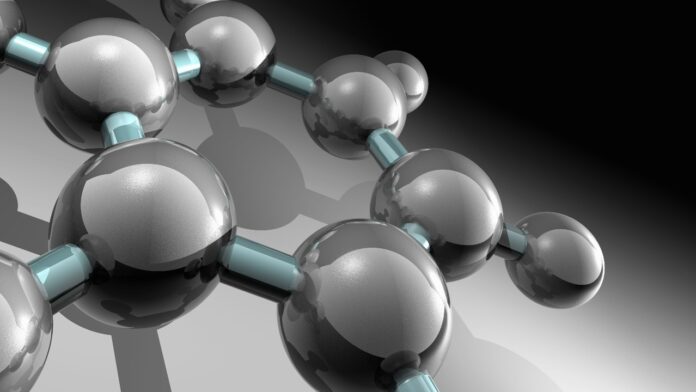A compound is a substance that consists of atoms of the same element or atoms of more than one element. At least 90% of compounds are organic compounds. In earlier days, the definition of organic compounds was entirely different. People thought compounds derived from plants and animals were organic and compounds obtained from other sources as non-organic, but the present definition is altogether different.
So, let’s learn about the organic compounds in detail.
What are organic compounds?
In simple terms, organic compounds are chemical compounds with carbon content.
Does that mean all compounds containing carbon are organic compounds?
No, there are a few compounds that contain carbon but are not organic.
Then what exactly is an organic compound?
An organic compound is a class of chemical compounds in which carbon atoms are covalently linked to other elements’ atoms. The other element could be hydrogen, oxygen, or nitrogen. Examples of organic compounds are ethane, methane, ethyne, etc.
- Organic compounds mostly contain carbon linked to carbon or hydrogen.
- Sometimes they are linked to other elements such as phosphorus, nitrogen, and oxygen.
- There are a few compounds that contain carbon, but these are not organic compounds. Examples include carbon dioxide, carbon monoxide, cyanates, etc.
- The physical properties of organic compounds include melting point, boiling point, refraction index, odour, colour, and durability.
Classification of organic compounds
The presence of a vast number of organic compounds resulted in requiring a systematic classification. Organic compounds are classified based on structure (arrangement of atoms) and function. Firstly, let us see the classification based on structure. Organic compounds are classified into two types based on structure. They are:
- Acyclic or open chain compounds
- Cyclic or open-chain compounds.
Acyclic or open chain compounds: These compounds do not form a loop and are linear in structure. They have straight chains, or they are branched. They are also known as aliphatic compounds. They were known as aliphatic because these compounds were produced from animal or vegetable fats.
Some examples of acyclic compounds include methane, monocyclic cycloalkanes such as cyclopropane, cyclobutane, etc. The acyclic compounds are classified as straight-chain or branched chains depending on the style they are connected to. In the straight-chain compound, the atoms are connected in a straight chain, whereas in the branched chain, there is a straight-chain link along with one or two branch chains.
Example for straight chain compound
CH3-CH2-CH2-CH3 → n-butane
Example for branched-chain compound
CH3– CH–CH3
|
CH3
Isobutane
Cyclic or closed chain compounds: As the name suggests, cyclic compounds are those compounds where one or more atoms are connected to form a loop. These compounds consist of one or more rings of atoms and the molecules. These types of organic compounds are also known as ring compounds. Cyclic or closed chain compounds are further classified into two types. They are homocyclic compounds and heterocyclic compounds. Let us further discuss these two types of compounds.
Homocyclic compounds: These are compounds where the ring structures are formed by the same type of atom, i.e. carbon atom. These compounds are also known as carbocyclic compounds. This compound consists of only carbon atoms, and no other element is present. Examples are naphthalene and benzene.
Homocyclic compounds are further divided into different categories. They are alicyclic compounds and aromatic compounds.
- Alicyclic compounds are those compounds that have one or more than one carbon atoms that are joined together to form a ring.
- Aromatic compounds have one or more planar rings of atoms linked by two different types of covalent bonds. These compounds are made up of benzene rings.
- Aromatic compounds are also known as benzenoid compounds because they reflect the properties of benzene.
- These compounds have their name derived from the Greek word “aroma”, which means smell.
- Most of the compounds bear a pleasant smell.
- Aromatic compounds are further divided into monocyclic, bicyclic, and tricyclic aromatic compounds.
- The monocyclic aromatic compound consists of one ring of benzyne. The bicyclic aromatic compound comprises two benzene rings, and similarly, the tricyclic aromatic compound consists of three benzene rings.
- A few aromatic compounds do not contain a benzene ring but are made up of other unsaturated rings. These are known as non-benzenoid aromatic compounds.
Heterocyclic compounds: These are compounds where two or more atoms join together to form a ring structure. As with any other organic compounds, these compounds have carbon atoms and at least one atom of other elements. Examples of heterocyclic compounds include synthetic dyes.
Heterocyclic compounds are further classified into two categories. They are alicyclic heterocyclic compounds and aromatic heterocyclic compounds.
- The alicyclic heterocyclic compounds have ring structures that are formed by one or more heteroatoms. Examples of heterocyclic compounds include tetrahydrofuran.
- The aromatic heterocyclic compound consists of molecules that have one or more heteroatoms. Examples include thiophene and furan.
Classification of an organic compound based on functional group
A functional group is a group of atoms found in the molecule that are connected in a specific manner responsible for the compound’s chemical properties. The chemical properties of the organic compound depend on the functional group. Hydrocarbons consist of hydrogen and carbon atoms.
Hydrocarbons are the source of all organic compounds. Organic carbons are derived by replacing one or more hydrogen atoms. The groups which restore hydrogen from hydrocarbons are called functional groups. This can be better understood with an example.
Example of hydrocarbon CH4, CH3-CH3
Example of functional group CH3-OH, CH3-CHO
The chemical properties of organic compounds are affected by the functional group, and to some extent, it affects the physical properties. For instance, CH3-OH and CH3-CH2-CH2-OH display the same chemical properties because of the functional group (-OH) present in both.
Conclusion
These are the classification of organic compounds based on the structure and function of the atoms. The huge number of organic compounds present has resulted in requiring systematic classification of the organic compounds. By knowing this classification, you can better understand the vast organic compounds.




![Merchant Navy Recruitment 2024: [4000+ Posts]: How To Apply Online? Merchant Navy Recruitment 2024: [4000+ Posts]: How To Apply Online?](https://futurewithtech.com/wp-content/uploads/2024/05/Indian-Merchant-Navy-Recruitment-2024-218x150.jpg)
